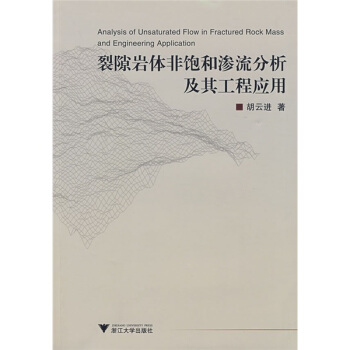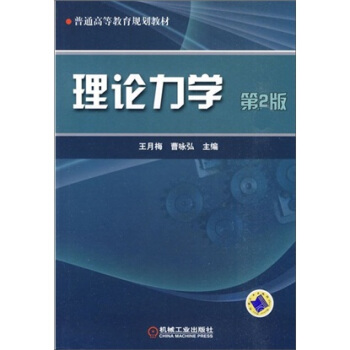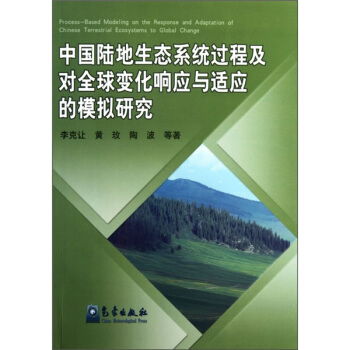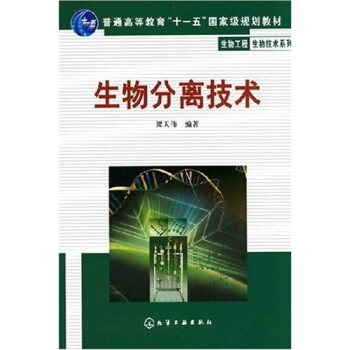![变换群与曲线模空间(英文版) [Transformation Groups and Moduli Spaces of Curves]](https://pic.tinynews.org/10053153/564e90f0Nadef55e2.jpg)
变换群与曲线模空间(英文版) [Transformation Groups and Moduli Spaces of Curves] pdf epub mobi txt 电子书 下载 2025
- Transformation Groups
- Moduli Spaces
- Curves
- Algebraic Geometry
- Complex Geometry
- Representation Theory
- Mathematical Physics
- Topology
- Birational Geometry
- Enumerative Geometry

具体描述
编辑推荐
《变换群与曲线模空间》是由高等教育出版社出版的。内容简介
Transformation groups have played a fundamental role in many areas of mathematics such as differential geometry, geometric topology, algebraic topology, algebraic geometry, number theory. Ore of the basic reasons for their importance is that symmetries are described by groups (or rather group actions). Quotients of smooth manifolds by group actions are usually not smooth manifolds. On the other hand, if the actions of the groups are proper, then the quotients are orbifolds. An important example is given by the action of the mapping class groups on the Teichmuller spaces, and the quotients give the moduli spaces of Riemann surfaces (or algebraic curves) and are orbifolds.This book consists of expanded lecture' notes of two summer schools Transformation Groups and Orbifolds and Geometry of Teichmuller Spaces and Moduli Spaces of Curves in 2008 and will be a valuable source for people to learn transformation groups, orbifolds, Teichmuller spaces, mapping class groups, moduli soaces of curves and related topics.
目录
Lectures on Orbifolds and Group CohomologyAlejandro Adem and Michele Klaus
1 Introduction
2 Classical orbifolds
3 Examples of orbifolds
4 Orbifolds and manifolds
5 Orbifolds and groupoids
6 The orbifold Euler characteristic and K-theory
7 Stringy products in K-theory
8 Twisted version
References
Lectures on the Mapping Class Group of a Surface
Thomas Kwok-Keung Au, Feng Luo and Tian Yang
Introduction
1 Mapping class group
2 Dehn-Lickorish Theorem
3 Hyperbolic plane and hyperbolic surfaces
4 Quasi-isometry and large scale geometry
5 Dehn-Nielsen Theorem
References
Lectures on Orbifolds and Reflection Groups
Michael W. Davis
1 Transformation groups and orbifolds
2 2-dimensional orbifolds
3 Reflection groups
4 3-dimensional hyperbolic reflection groups
5 Aspherical orbifolds
References
Lectures on Moduli Spaces of Elliptic Curves
Richard Hain
1 Introduction to elliptic curves and the moduli problem
2 Families of elliptic curves and the universal curve
3 The orbifold M1,1
4 The orbifold ■1,1 and modular forms
5 Cubic curves and the universal curve ■→■1,1
6 The Picard groups of M1,1 and ■1,1
7 The algebraic topology of ■1,1
8 Concluding remarks
Appendix A Background on Riemann surfaces
Appendix B A very brief introduction to stacks
References
An Invitation to the Local Structures of Moduli of Genus One Stable Maps
Yi HU
1 Introduction
2 The structures of the direct image sheaf
3 Extensions of sections on the central fiber
References
Lectures on the ELSV Formula
Chiu-Chu Melissa Liu
1 Introduction
2 Hurwitz numbers and Hodge integrals
3 Equivariant cohomology and localization
4 Proof of the ELSV formula by virtual localization
References
Formulae of One-partition and Two-partition Hodge Integrals
Chiu-Chu Melissa Liu
1 Introduction
2 The Marino-Vafa formula of one-partition Hodge integrals
3 Applications of the Marifio-Vafa formula
4 Three approaches to the Marino-Vafa formula
5 Proof of Proposition 4.3
6 Generalization to the two-partition case
References
Lectures on Elements of Transformation Groups and Orbifolds
Zhi Lu
1 Topological groups and Lie groups
2 G-actions (or transformation groups) on topological spaces
3 Orbifolds
4 Homogeneous spaces and orbit types
5 Twisted product and slice
6 Equivariant cohomology
7 Davis-Januszkiewicz theory
References
The Action of the Mapping Class Group on Representation Varieties
Richard A. Wentworth
1 Introduction
2 Action of Out (π) on representation varieties
3 Action on the cohomology of the space of fiat unitary connections
4 Action on the cohomology of the SL (2, C) character variety
References
前言/序言
Transformation groups have played a fundamental role in many areas of mathematics such as differential geometry, geometric topology, algebraic topology, algebraic geometry, number theory. One of the basic reasons for their importance is that symmetries are described by groups (or rather group actions). Indeed, the existence of group actions makes the spaces under study more interesting, and properties of groups can also be understood better by studying their actions on suitable spaces.Quotients of smooth manifolds by group actions are usually not smooth manifolds. On the other hand, if the actions of the groups are proper, then the quotients are orbifolds.
The notion of V-manifolds was first introduced by Satake in 1956 in the con-text of locally symmetric spaces and automorphic forms. V-manifolds were reintroduced and renamed orbifolds by Thurston near the end of 1978 in connection with the Thurston geometrization conjecture on the geometry of three dimensional manifolds. Basically, orbifolds are locally quotients of smooth manifolds by finite groups. Besides arising from transformation groups, many natural spaces in number theory and algebraic geometry are orbifolds.
用户评价
这本书的封面设计就透露出一种深邃而严谨的气息,厚重的书脊暗示着内容的丰富与扎实。我一直对数学中那些看似抽象却能深刻揭示事物本质的工具充满好奇,尤其是“变换群”这个概念,它在几何、代数等诸多领域都扮演着至关重要的角色。而“曲线模空间”更是让我着迷,它如同一个抽象的“空间”,专门用来“衡量”和“分类”各种各样的曲线,想象一下,能够将无数形状各异的曲线组织起来,形成一个有序的宇宙,这本身就充满了数学之美。我尤其期待书中是如何将这两个概念联系起来的,它们之间是否存在着某种精妙的桥梁,使得对变换群的理解能够反过来帮助我们深入探索曲线的丰富性质,或者反之,曲线的结构如何启发我们去构建更强大的变换群理论。这本书的书名本身就给我带来了无穷的想象空间,我迫不及待地想通过阅读它,去揭开这些数学概念背后隐藏的深刻洞见,领略数学家们如何用抽象的语言描绘出如此迷人的数学世界。
评分作为一个长期以来对数学领域抱有浓厚兴趣的读者,这本书的书名立刻吸引了我的目光。我对“变换群”这个概念一直有着一种难以言喻的着迷,它代表了一种深刻的对称性和结构性的视角,能够揭示物体在各种变化下不变的本质。而“曲线模空间”,这听起来就像是一个能够将所有具有相似特性的曲线进行分类、组织并赋予其“度量”的抽象宇宙。我非常好奇,这本书将如何阐述这两者之间的深刻联系。是不是说,通过理解特定的变换群,我们就能有效地构建或理解与之对应的曲线模空间?又或者,是否是曲线模空间的某些内在结构,反过来引导我们去发现新的、有意义的变换群?这本书所涵盖的内容,我预计会涉及一些高深的代数几何和拓扑学的概念,但我相信,如果作者能够以清晰且富有启发性的方式来呈现,即使是对于初学者,也能领略到其中蕴含的数学之美,并被激发起更进一步探索的渴望。
评分对于任何对现代代数几何和拓扑学感兴趣的读者来说,“变换群”和“曲线模空间”这两个术语的组合无疑是一个极具吸引力的信号。书名所暗示的,是一种将群论的抽象力量与曲线几何的丰富世界相结合的深入研究。变换群,作为描述对称性和不变性的强大工具,在理解几何对象的结构和分类方面起着核心作用。而曲线模空间,我理解它是一个能够系统地研究和分类各种曲线的框架,它提供了一种“度量”和“比较”不同曲线形状和性质的视角。我预想,这本书将详细阐述如何利用变换群的理论来分析曲线的性质,例如研究它们的共形结构、代数特性,以及在各种几何变换下的行为。同时,我也期待书中能够深入探讨如何构建和理解这些曲线模空间,以及它们在理论物理、编码理论等相关领域中的潜在应用。这本书的书名本身就预示着一次深入数学前沿的探索之旅。
评分当我看到这本书的名字时,我立刻被它所蕴含的数学深度所吸引。它直接点出了“变换群”和“曲线模空间”这两个在代数几何和拓扑学领域中极其重要的概念。我对变换群的理解,主要集中在它如何揭示对象的对称性和不变性,以及如何通过群的作用来研究几何对象的结构。而“曲线模空间”,这个概念让我联想到一个能够对各种曲线进行“分类”和“度量”的抽象“空间”,它允许我们从整体上把握曲线的丰富多样性。我非常期待这本书能够详细阐述这两个概念之间的精妙联系,例如,变换群的性质如何影响着曲线模空间的结构,或者反之,曲线模空间的某些特性又是由哪些变换群所决定的。这本书的书名本身就暗示着一种深刻的数学洞察,我相信阅读它将是一次对数学前沿的深刻探索,让我能够更好地理解那些抽象概念背后所蕴含的优雅和力量。
评分当我第一次看到这本书的书名时,我的脑海里 immediately 浮现出一种想要深入探索的冲动。变换群,这个概念本身就带着一种“对称”和“结构”的美感,而“曲线模空间”则像是为我们提供了一个可以“度量”和“比较”曲线形状的“舞台”。我猜想,这本书一定是在探讨如何利用群论的强大工具来分析和理解曲线的各种性质,比如它们的拓扑结构、代数性质,甚至是在不同几何变换下保持不变的特征。而模空间的概念,我理解它更像是对所有具有某种共同属性的曲线进行一个“集合”的描述,并且在这个集合中,我们还可以定义出一种“距离”或者“相似度”的概念,使得我们可以直观地“看到”不同曲线之间的联系和区别。我特别好奇书中是如何将这两个看似独立的数学领域巧妙地结合起来的,它们之间的融合是否会产生出一些全新的、令人兴奋的研究方向?这本书是否会带领我进入一个我之前从未想象过的数学领域,让我看到那些隐藏在复杂公式背后的优雅逻辑?
评分京东5折促销买的,很实惠。
评分先说外观 不错 包装很好装订的也不错 字体大小适中 感觉很舒服 内容 很博大 涉及很多很多 真的是对一个人知识面理解力的考验 要细细的读 不断的品 现在还没读完 但是 依然推荐
评分京东5折促销买的,很实惠。
评分京东5折促销买的,很实惠。
评分京东5折促销买的,很实惠。
评分京东5折促销买的,很实惠。
评分先说外观 不错 包装很好装订的也不错 字体大小适中 感觉很舒服 内容 很博大 涉及很多很多 真的是对一个人知识面理解力的考验 要细细的读 不断的品 现在还没读完 但是 依然推荐
评分先说外观 不错 包装很好装订的也不错 字体大小适中 感觉很舒服 内容 很博大 涉及很多很多 真的是对一个人知识面理解力的考验 要细细的读 不断的品 现在还没读完 但是 依然推荐
评分先说外观 不错 包装很好装订的也不错 字体大小适中 感觉很舒服 内容 很博大 涉及很多很多 真的是对一个人知识面理解力的考验 要细细的读 不断的品 现在还没读完 但是 依然推荐
相关图书
本站所有内容均为互联网搜索引擎提供的公开搜索信息,本站不存储任何数据与内容,任何内容与数据均与本站无关,如有需要请联系相关搜索引擎包括但不限于百度,google,bing,sogou 等
© 2025 book.tinynews.org All Rights Reserved. 静思书屋 版权所有




![气候变化的挑战与民主的失灵 [The Climate Change Challenge and the Failure of Democracy] pdf epub mobi 电子书 下载](https://pic.tinynews.org/10104181/4aa6d4c0-f97c-464d-b254-610ef74e16f0.jpg)





![武汉大学“十一五”规划教材:电动力学 [Electrodynamics] pdf epub mobi 电子书 下载](https://pic.tinynews.org/10158798/a62084c7-efdd-44d7-8d43-bd4fb2960b6e.jpg)

![磁性理论 [THE THEORY OF MAGNETISM MADE SIMPLE] pdf epub mobi 电子书 下载](https://pic.tinynews.org/10175894/5d3a28dc-cf7b-41cb-a472-43c7d894c9a0.jpg)
![欧氏空间上的勒贝格积分(修订版)(英文版) [Lebesgue Integration on Euclidean Space Revised Edition] pdf epub mobi 电子书 下载](https://pic.tinynews.org/10184606/09f2a576-82ee-4fb5-adf2-f8e2aba380a7.jpg)






